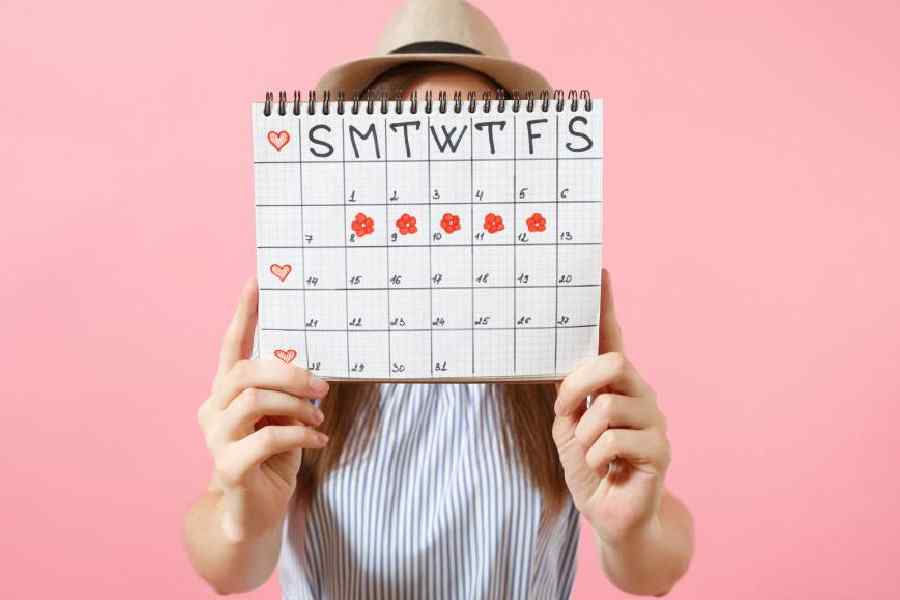Among the many techniques that helped the US women’s soccer team win the World Cup in 2019 was, according to one of the team’s coaches, a slightly unorthodox strategy: paying attention to the players’ menstrual cycles.
More than a year before the World Cup, the soccer players began meticulously tracking their periods. Within months, “we noticed that around the first day of the cycle, some players were flagging,” said the coach, Dawn Scott. “It became clear that some players were having pretty bad period symptoms that were impacting their recovery and, ultimately, performance.”
So the team strategised to work with their cycles, giving themselves more time to recover between workouts during the lower-energy phases, Scott said. She described how paying attention to these details allowed the players to perform their best even at the most sluggish times of the month. In the World Cup final, which Scott said came during the low-energy premenstrual phase of midfielder Rose Lavelle’s cycle, Lavelle nonetheless scored the winning goal against the Netherlands. Her period started the next day.
“People think, ah, it’s just female physiology, there’s nothing we can do about it,” Scott said. “But there is so much you can do.”
The practice of planning workouts around the menstrual cycle to optimise fitness results, known as “cycle syncing”, has permeated mainstream fitness, too. In 2021, the wearable fitness tracker Whoop introduced features to help women sync their workouts and cycles. Last summer, Nike started a cycle-informed programme on its Training Club app.
How is cycle syncing supposed to work? Well, the average cycle lasts between 21 and 35 days and consists of four hormonally distinct phases: follicular, ovulation, luteal and menstruation (bleeding). The hormone shifts in each phase influence not just the reproductive organs but “almost every cell in the body”, said Dr Shruthi Mahalingaiah, a fertility doctor at Massachusetts General Hospital and professor of environmental and reproductive health at Harvard T.H. Chan School of Public Health in the US.
In the follicular phase, estrogen and follicle-stimulating hormone begin to rise, nudging the ovaries to nurture an egg for release and thickening the uterus for its arrival, Dr Mahalingaiah said. According to proponents of cycle syncing, in this phase the body is primed to take on stress and can recover more quickly. Juliana Antero, a researcher at the French Institute of Sport located on the outskirts of Paris, leads a programme in the French sports ministry called Empow’her, which has been tailoring the training schedules of professional athletes to their cycles ahead of the 2024 Olympic Games. Antero said that, anecdotally, she has observed “a burst of energy” during this phase among athletes, which means they “are better at high-intensity training loads, they run faster, and they are more powerful”. As part of their personalised training regimen, the highest-intensity activities are scheduled during the follicular phase.
The egg’s release — ovulation — is followed by the luteal phase, characterised by high levels of the hormone progesterone, which is responsible for maintaining a stable environment in the uterus for a fertilised egg. The luteal phase can be associated with premenstrual syndrome symptoms, like bloating and low energy. In this window, the body may be better suited to lower-intensity activities with increased recovery time between workouts, said Stacy Sims, a sports and nutrition physiologist, and former athlete who studies menstrual cycles and performance in professional athletes.
But cycles rarely follow supposedly typical patterns of peaks and troughs, said Kathryn Clancy, who is author of Period: The Real Story of Menstruation. “If we look at the hormone cycles of hundreds of people, we don’t find anybody who looks like the textbook.” For example, some women skip ovulation for a few cycles or have multiple surges of estrogen. And it remains unclear whether cycle syncing makes sense for women using hormonal forms of birth control.
For the many women who aren’t training for a professional sporting event, just getting in a quick workout already feels like a monumental task without mapping it around the menstrual cycle, said Kelly Roberts, founder of the recreational running community Badass Lady Gang.
People who have menstrual cycle irregularities because of polycystic ovary syndrome or premenstrual dysphoric disorder should talk to a doctor about the workout timing that would best help with their symptoms, said Ava Mainieri, former head of research at the women’s healthcare provider Tia.
The biggest upside of this trend, Mainieri said, is that it has increased “body literacy”. “Now women are understanding that hey, I might be feeling this specific symptom during this time for this specific reason, so I’m going to be tender with myself,” she said. “That part is really lovely.”
NYTNS










